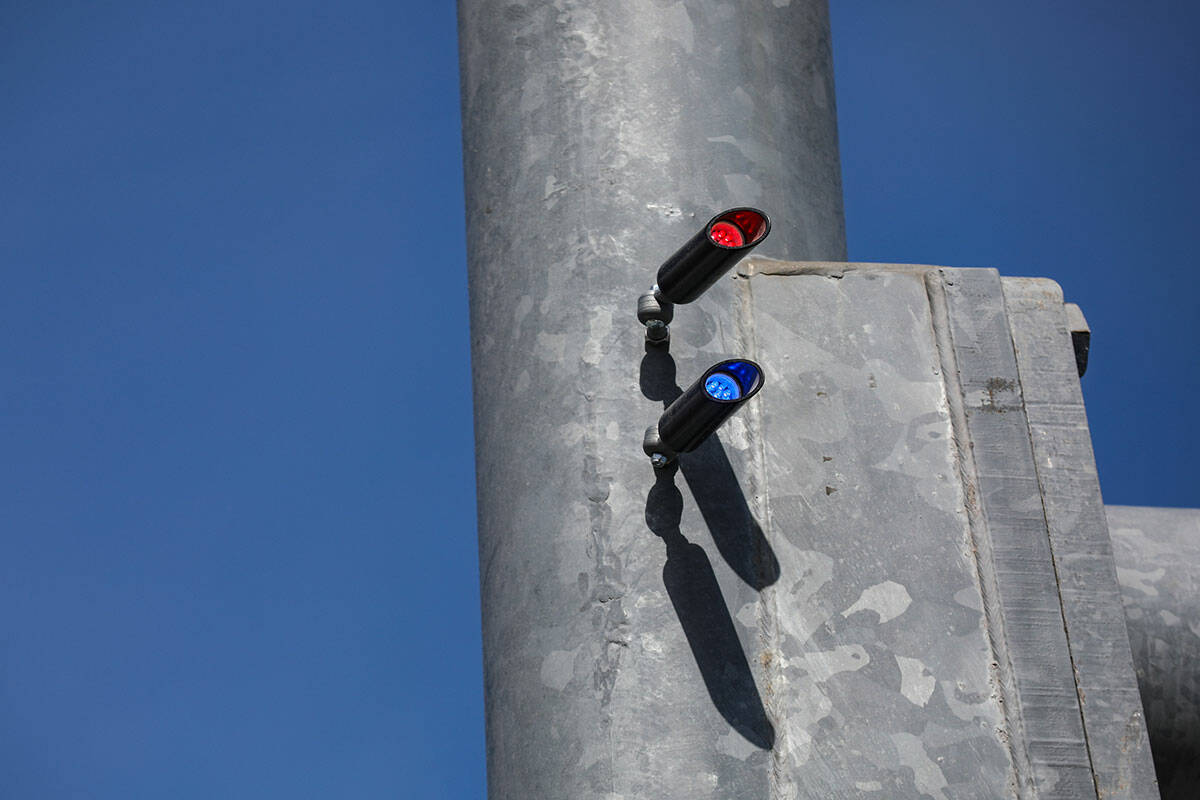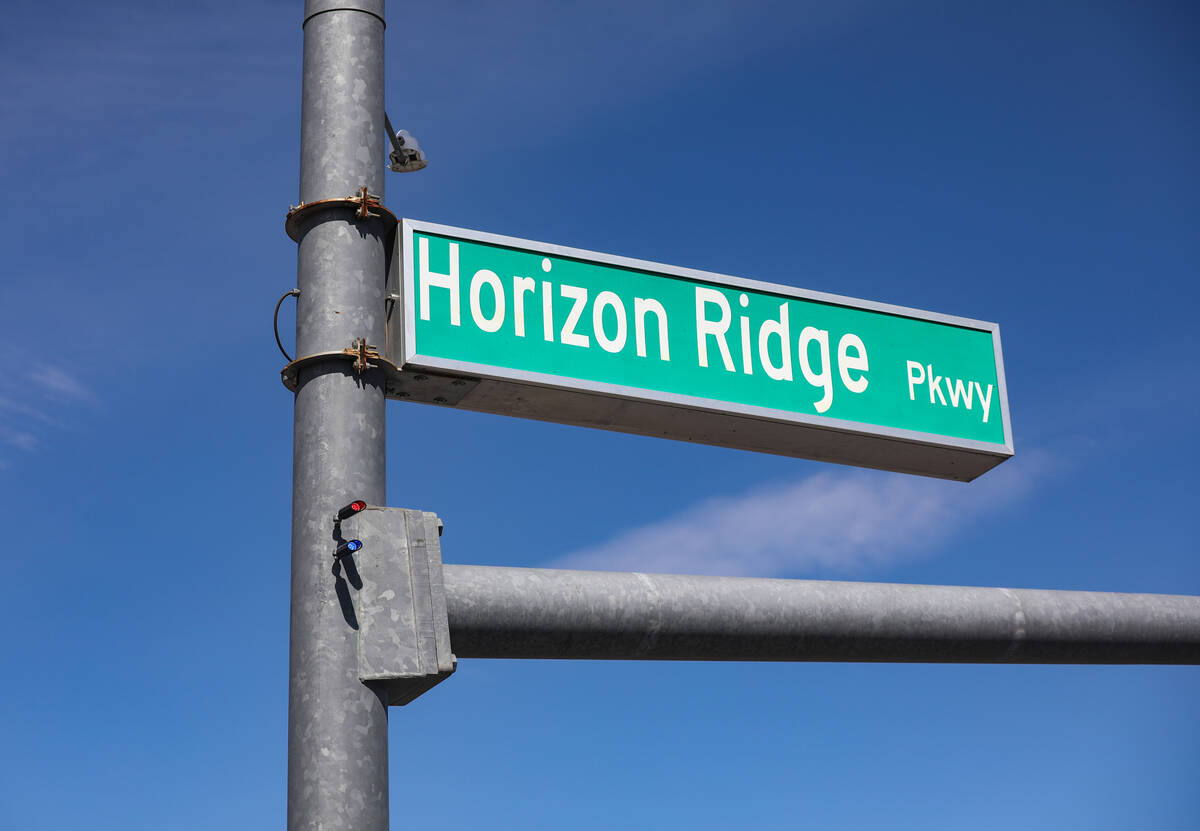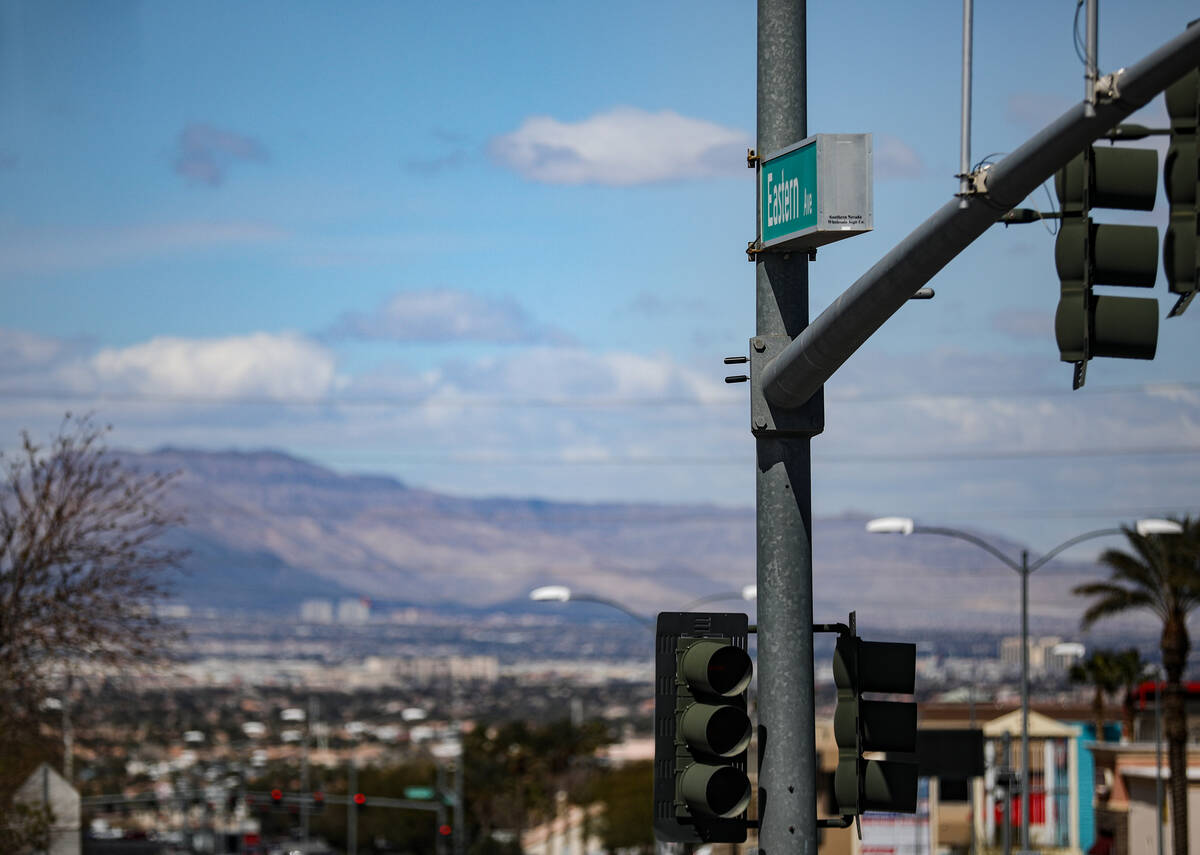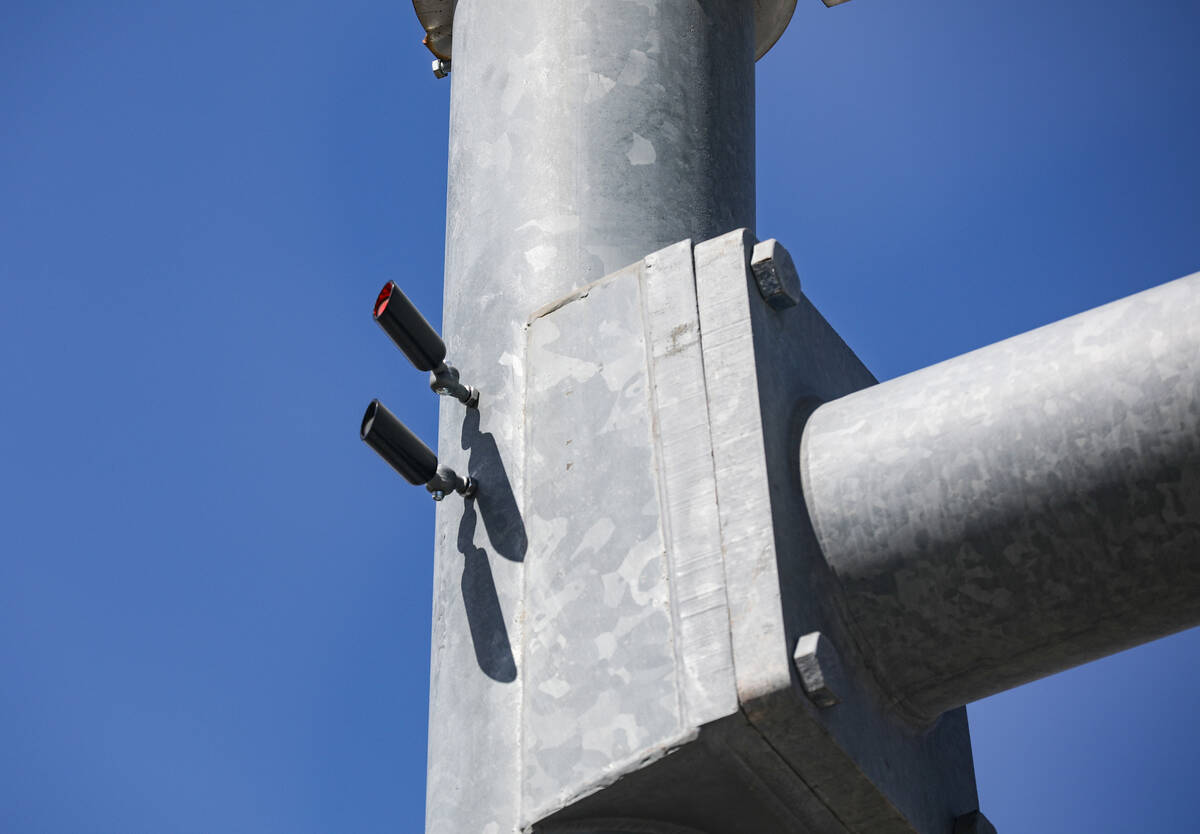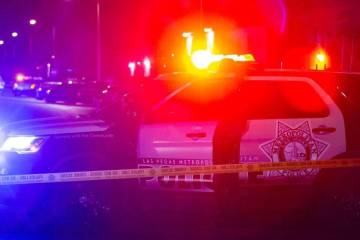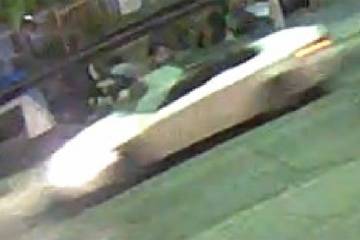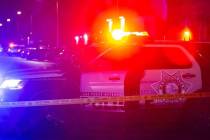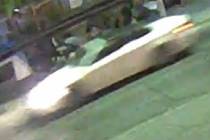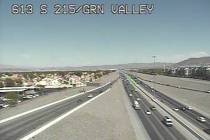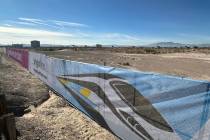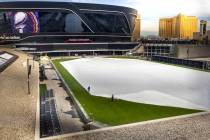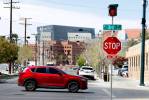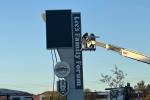Red-light runners should avoid these Henderson intersections
The Henderson Police Department is looking to get a handle on red-light runners using indicator lights installed at a dozen intersections throughout the city.
Red-light indicators, which have been in use by Henderson police for just over a month at selected intersections, provide police officers with a tool to safely enforce red-light-running laws with motorists who disregard them.
The bright LED lights are mounted on the side of traffic poles and light up when the traffic signals going in that specific direction are red. There is a red indicator light, which indicates a thru lane has a red signal, and a blue light, which lights up when a left-turn signal turns red.
This will allow the department “to be able to have an officer sit downstream from the intersection and observe the indicators,” Henderson Police Sgt. Roger Matuszak said. “We’ll sit downstream from the intersection where we can enter traffic safely instead of cut across an intersection through cross traffic to get to a violator, like we have been in the past.”
Since the red-light indicators are hard-wired and connected to the same power source as the red light, there is no mistake when one of the indicator lights is on. “If the electrons are flowing to one, they’re flowing to the other,” Matuszak said.
Henderson officials didn’t respond to questions about the cost of the program, but Matuszak said it was funded via a grant from the Clark County office of Public Safety.
UNLV’s Kirk Kerkorian School of Medicine didn’t immediately respond to requests for red-light-running crash data. The school analyzes traffic safety issues, including crash data, putting out a quarterly newsletter on the topic.
The addition of red-light indicators in Henderson comes as Clark County Sheriff Kevin McMahill is pushing to add both red-light and speed cameras. McMahill said the cameras in addition to other means, could help bolster a safer driving environment in the Metropolitan Police Department’s jurisdiction.
Erin Breen, director of Road Equity Alliance Project at UNLV, applauds the adding of the indicator lights, calling them a great tool for the safety of the offers police waiting downstream. The focus on red-light runners is evidence of a culture in Southern Nevada that some believe laws were not made them, Breen said.
“I firmly believe in the long term, this project will show the need for safety cameras because of the number of citations that will be written; however, because it does not record the violations, or even count them, other studies will be needed to identify just how many violators there are, and how our law enforcement could never keep up at this point,” Breen said. “I am happy to see a focus on this problem at any level to help drivers return to using yellow lights to slow down and stop,” not play chicken with speeding up and often missing the yellow and entering well after the signal is red.”
The pilot program could grow larger if data collected during the period shows success in curbing red-light runners at the selected intersections.
“The intersections were chosen by volume, the number of accidents and public outcry for the sake of enforcement,” Matuszak said. “Once we get some data back, which I would anticipate would be in about six to 12 months, we could make an informed decision to whether or not we want to use more, or put them in other places. Or maybe even relocate some of the ones we already have, to make it more feasible for enforcement.”
Contact Mick Akers at makers@reviewjournal.com or 702-387-2920. Follow @mickakers on X.
Here are the 12 Henderson intersections with red-light indicators installed
Boulder Highway and Lake Mead Parkway
Boulder Highway and Horizon Drive
Sunset Road and Marks Street
Sunset and Stephanie Street
Stephanie and Warm Springs Road
St. Rose Parkway and Eastern Avenue
St. Rose and Raiders Way
Horizon Ridge Parkway and Eastern
Horizon Ridge and Green Valley Parkway
Horizon Ridge and Horizon Drive
Green Valley and Warm Springs
Green Valley and Sunset
Mick Akers



